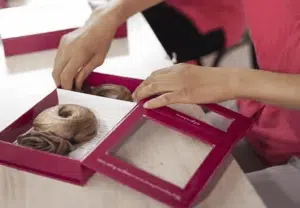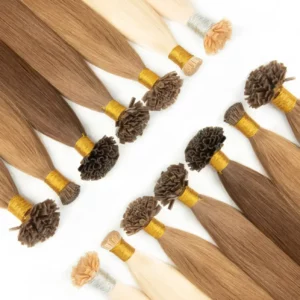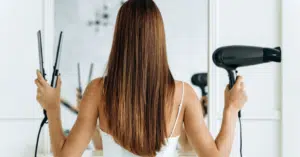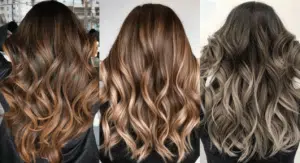Tired of hair extensions that don’t hold up or irritate your clients’ scalps? Sew-in wefts might just be the solution salons need—but are they perfect?
Sew-in weft hair extensions are long-lasting, secure, and ideal for thicker hair types—but they can also cause tension on natural hair if not installed correctly.

Most hairstylists know that no method is one-size-fits-all. Sew-in wefts offer clear benefits—but also come with challenges. Let’s break down the real pros and cons to help U decide if it’s the right system for your clients.
Types of Sew-In Wefts Hair Extensions?
Think all sew-in wefts are the same? Not quite—there are several weft styles, and knowing the differences is key for salons offering premium services.
Sew-in wefts come in different forms: hand-tied, machine weft, flat weft, and genius weft. Each type suits different clients’ needs and installation techniques.
Hand-Tied Wefts
Hand-tied wefts are thin, lightweight, and flexible. They work great for clients with fine or medium-density hair. Because they are delicate, they must be sewn in by hand and cannot be cut without unraveling. The comfort level is high, and they lay very flat against the scalp, making them almost invisible.

Machine Wefts
Machine wefts are thicker and more durable. They can be cut easily and are ideal for clients with thick hair. Because of their bulk, they are better suited for adding large volumes quickly. But they don’t lie as flat, so visibility can be an issue if not layered correctly.
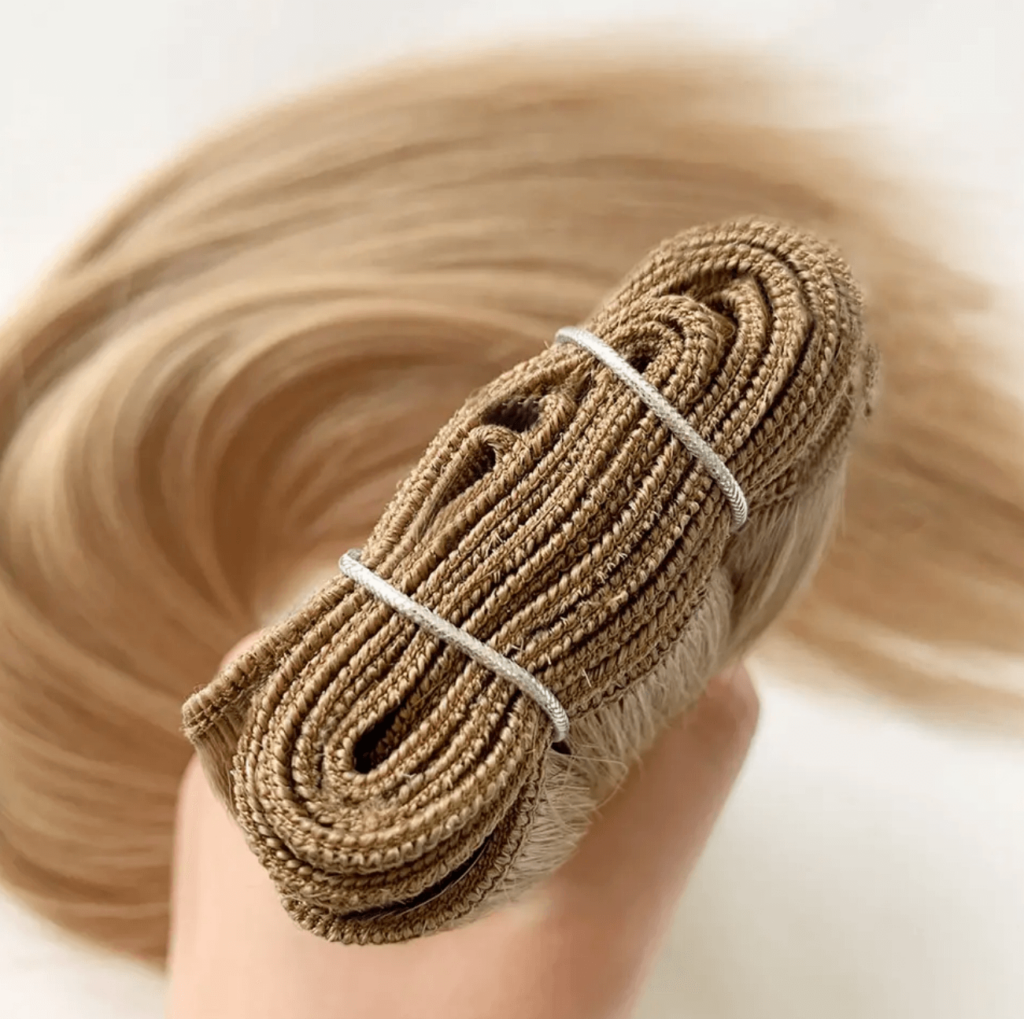
Flat Wefts
Flat wefts are a modern upgrade. They combine the cuttable nature of machine wefts with the flatness of hand-tied wefts. They’re thin, seamless, and can be cut without shedding. These are suitable for stylists who want flexibility and speed without compromising on the natural look.
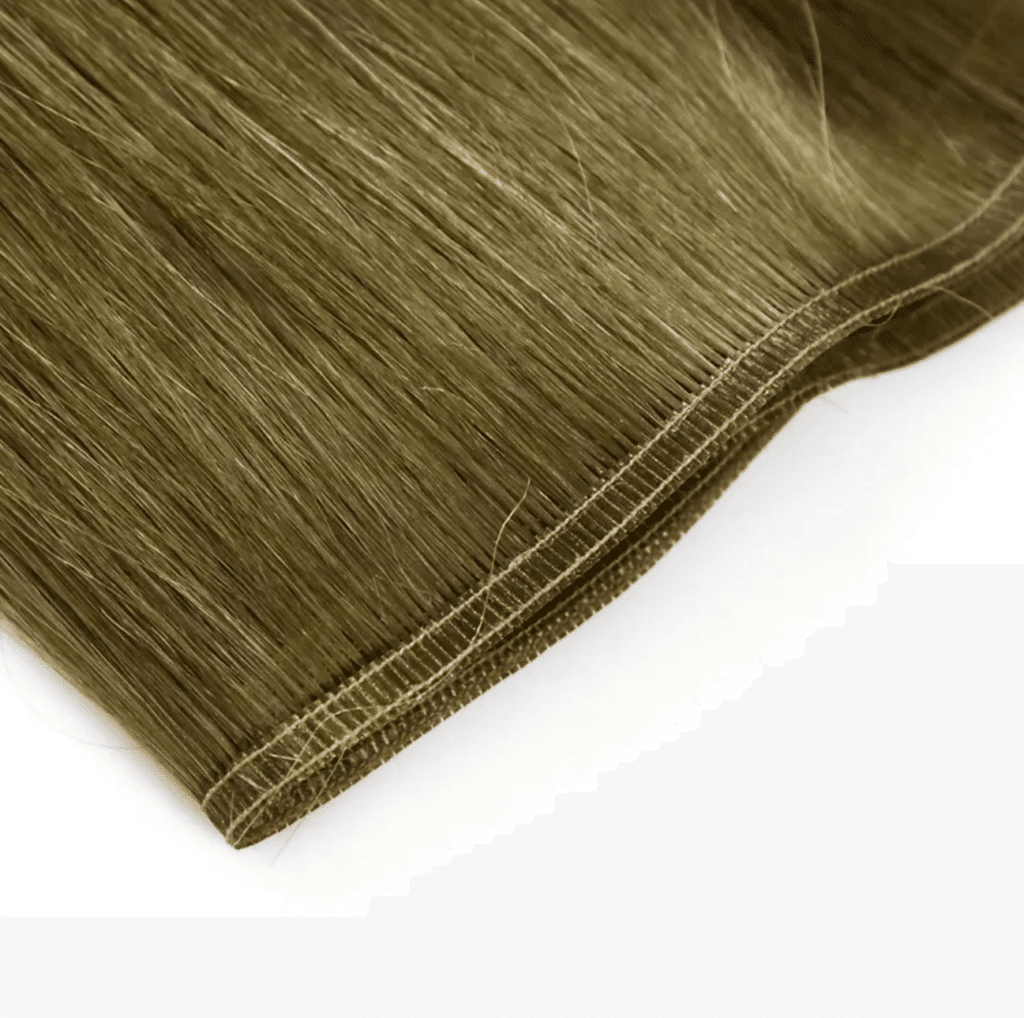
Genius Wefts
This is the premium option. Genius wefts are ultra-thin, cuttable, and tangle-free. They work with various hair types and give a flawless, undetectable finish. They’re easy to install and remove and don’t shed like traditional machine wefts. This is what high-end salons are shifting toward.
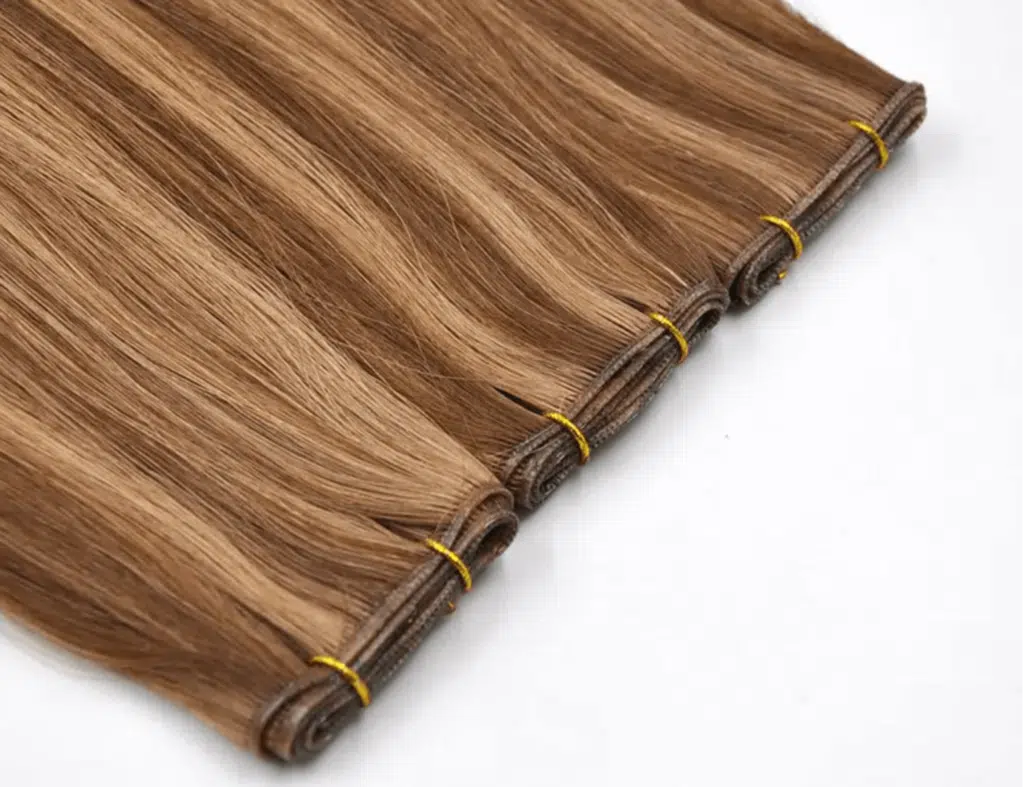
| Weft Type | Can Be Cut | Thickness | Visibility | Best For |
|---|---|---|---|---|
| Hand-Tied | ❌ | Thin | Low | Fine to medium hair |
| Machine | ✅ | Thick | Medium | Thick hair |
| Flat | ✅ | Thin | Low | Most hair types |
| Genius | ✅ | Ultra-thin | Very Low | Premium salon usage |
Choosing the right type starts with understanding your client’s scalp, hair density, and how often they plan to maintain the look.
Advantages of Sew-In Weft Hair Extensions?
Clients want results that last. Stylists want installations that are reliable. Sew-in wefts often strike the perfect balance between both needs.
Sew-in wefts are secure, long-lasting, reusable, and create a natural look with minimal damage when installed correctly.
%[Advantages of Sew-in wefts(https://placehold.co/600×400 “Advantages of Sew-in wefts”)
Long-Lasting and Secure
Sew-in wefts can last 6–10 weeks between maintenance sessions. Unlike tape-ins, there’s no adhesive that can weaken or slip. When installed on strong braids or beaded rows, these wefts stay in place securely.
Cost-Efficient for Salons
Stylists can reuse full cuticle sew-in wefts—especially if sourced from factories like Hibiscus Hair. The initial cost is higher, but over time, reusability cuts costs for both the stylist and the client. Plus, U control the timing of move-ups.
Natural Finish
Sew-in wefts, especially genius and hand-tied ones, lay flat and blend seamlessly with natural hair. They don’t create bulk at the scalp and are nearly undetectable when applied professionally.
Ideal for Active Clients
Clients who sweat a lot, swim, or work out love sew-ins. There’s no glue to dissolve or tape to shift. The braid or beaded track acts as a solid foundation.
Scalp Friendly
No adhesives = less scalp irritation. For clients with sensitive skin, sew-in wefts are a safer, more comfortable choice.
Professional salons looking for high-quality results with long wear-time can depend on sew-in wefts—if installed and maintained the right way.

What are the disadvantages of sew in hair extensions?
Even the best methods come with limitations. Ignoring them can cost your salon time, clients, and reputation.
Sew-in extensions can be time-consuming, cause tension spots, and require expert-level installation to avoid scalp stress and hair breakage.
%[Disadvantages of sew-in hair extensions(https://placehold.co/600×400 “Disadvantages of sew-in hair extensions”)
Time-Consuming Installations
Unlike clip-ins or tape-ins, a proper sew-in install can take 2–3 hours or more. Braiding or bead-row preparation alone eats up time. For stylists charging by the hour, this may lower efficiency.
Skill Intensive
Sew-in wefts demand technique. An untrained stylist may sew too tight or place rows incorrectly, leading to discomfort or uneven weight distribution. This can pull on the scalp and cause pain—or even traction alopecia over time.
Limited Scalability for Thin Hair
Clients with very fine hair or weak roots may not be good candidates. The tension of the braid or bead-row can stress the follicles. Other options, like tape-ins or keratin tips, may be safer.
Maintenance Required
Even the best sew-in system needs move-ups every 6–8 weeks. Clients who skip maintenance risk matting, tangles, and even hair loss. Education is critical—clients must know aftercare is non-negotiable.
| Concern | Explanation |
|---|---|
| Time | Installs can take 2–3+ hours |
| Training Requirement | Improper tension = discomfort or damage |
| Client Suitability | Not ideal for thin/fine hair |
| Upkeep | Needs regular move-up appointments to prevent tangles |
Stylists must evaluate the hair type, scalp condition, and lifestyle of each client before offering sew-ins.

Do sew in wefts damage your hair?
Stylists get this question all the time. The answer is: not if U do it right. But mistakes can cause lasting harm.
Sew-in wefts don’t damage hair when installed on healthy roots and maintained properly—but poor technique or neglect can lead to breakage or hair loss.
Where Damage Happens
Damage typically comes from:
- Too-tight braiding or sewing
- Using wefts too heavy for the hair type
- Not moving up the extensions on time
- Lack of proper aftercare
If U’re using full cuticle, soft, and aligned extensions like those from Hibiscus Hair, U reduce friction and matting risks.
Best Practices to Prevent Damage
- Choose the right weft weight: Heavier wefts = more tension. Match thickness to hair type.
- Install with clean, balanced rows: Beaded or braided rows should not pull or pinch.
- Educate clients on maintenance: Sleeping with a silk wrap, using sulfate-free shampoo, and detangling daily make a big difference.
My Honest Take
I’ve seen clients walk away thrilled—and I’ve seen stylists ruin their own work with shortcuts. If U take the time to do it right, sew-ins are one of the safest methods out there.
My Insights
Every stylist needs to know this: Not all sew-in wefts are created equal—and neither are all suppliers.
At Hibiscus Hair, we only offer full cuticle wefts made from single-donor hair. That means no tangling, no shedding, and real longevity. Our genius wefts have become the go-to for salons that need consistency, softness, and flawless blends every time.
Working with high-end salons in the USA, UK, Canada, and Australia has taught me this: when U give clients better hair, U get better loyalty.

FAQ
Q: How long do sew-in wefts last?
A: 6–10 weeks before a move-up is needed. The full cuticle grade hair wefts themselves can last over a year with proper care.
Q: Are sew-in wefts suitable for fine hair?
A: Usually not. Try tape-ins or flat tip extensions instead.
Q: Can sew-in wefts be reused?
A: Yes, especially full cuticle hair like ours. Reinstall after every move-up.
Q: What products should clients avoid?
A: Oils near the root, heavy conditioners on the weft line, and anything with sulfates.
Q: How many wefts do I need for a full head?
A: 100–150 grams for normal density. Thick hair may need 200g+.
Conclusion
Sew-in wefts offer salons secure, long-lasting installs with premium results—but only when done with care, skill, and the right hair.

